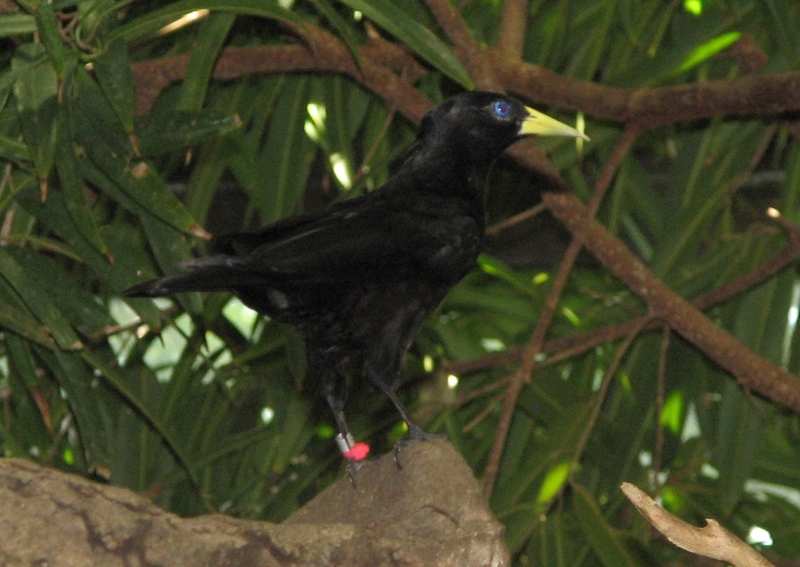|
| Query: psarocolius oseryi | Result: 4th of 4 | |
Cacique (Genus: Cacicus) - Wiki
| Subject: | Cacique (Genus: Cacicus) - Wiki
| |

| Resolution: 1092x774
File Size: 539351 Bytes
Upload Date: 2007:12:03 21:29:19
|
Cacique (bird)
From Wikipedia, the free encyclopedia
Order: Passeriformes
Family: Icteridae
[Photo] Red-rumped Cacique (Cacicus haemorrhous), Cincinnati Zoo and Botanical Garden. License: public domain. Date June 23rd 2007. Author Ltshears (http://commons.wikimedia.org/wiki/User:Ltshears)
The caciques are passerine birds in the New World blackbird family. Members of the family are resident breeders in tropical South America and north to Mexico. All of the group are in the genus Cacicus, except the aberrant Yellow-billed Cacique (Amblycercus holosericeus), which constitutes a monotypic genus. Judging from mtDNA cytochrome b and NADH dehydrogenase subunit 2 sequence (Price & Lanyon 2002), the aberrant oropendolas Band-tailed Oropendola (Ocyalus latirostris) and Casqued Oropendola, Psarocolius oseryi (Ocyalus oseryi?) seem to be closer to the caciques.
The caciques are birds associated with open woodland or denser forests. They are colonial breeders, with several long, hanging, bag-shaped nests in a tree, each suspended from the end of a branch. Some species choose a tree that also contains an active wasp nest as a deterrent to predators, and females compete for the best sites near the protection of the wasp nest. The eggs are incubated by the female alone.
These are slim birds with long tails and predominantly black or dark brown plumage. The pointed bill is pale yellow or blue-grey, depending on species, and several caciques have blue eyes. The female is typically smaller and duller than the male.
Three black species have the dark plumage enlivened by a red rump, five have a yellow rump and in some cases yellow on the shoulders, tail or lower belly, and the three dark brown caciques show no bright colour patches.
These gregarious birds eat large insects and fruit. They are very vocal, producing a wide range of songs, sometimes including mimicry.
Some species such as the Yellow-rumped Cacique have benefited from the more open habitat created by forest clearance and ranching, but the forest-dwellers have been adversely affected for the same reason.
Species of Cacicus
Yellow-rumped Cacique, Cacicus cela
Red-rumped Cacique, Cacicus haemorrhous
Scarlet-rumped Cacique, Cacicus microrhynchus
Subtropical Cacique, Cacicus uropygialis
Selva Cacique, Cacicus koepckeae
Golden-winged Cacique, Cacicus chrysopterus
Mountain Cacique, Cacicus chrysonotus
Ecuadorian Cacique, Cacicus sclateri
Solitary Cacique, Cacicus solitarius
Yellow-winged Cacique, Cacicus melanicterus
http://en.wikipedia.org/wiki/Cacique_%28bird%29
| The text in this page is based on the copyrighted Wikipedia article shown in above URL. It is used under the GNU Free Documentation License. You may redistribute it, verbatim or modified, providing that you comply with the terms of the GFDL. |
|
^o^
Animal Pictures Archive for smart phones
^o^
|
|